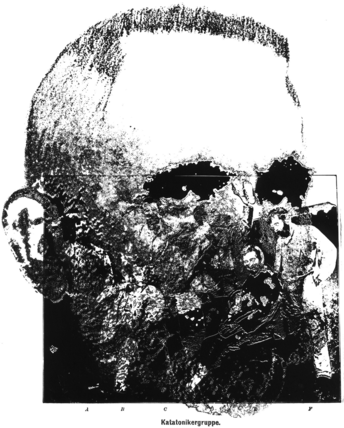Emil Kraepelin1856–1926
Kraepelin brought some degree of order to the classification of mental disorders. His nosology was initially presented in Psychiatrie. Ein Lehrbuch für Studierende und Aertze (1883) and it developed through its later editions. It was based on the accumulation of large numbers of case histories and their statistical analysis and it has provided a model for later classifications. Kraepelin’s approach resulted in a closer alignment of psychiatry with medicine generally because many categories of mental illness were treated in disease terms. That is, they were considered to be organic disorders of the brain which could be classified, had a developmental course, and were often assumed incurable. The contrast between Kraepelin’s theories and treatments of psychoses and those Freud adopted for neuroses was marked. The principal innovation of Kraepelin’s system was the distinction between the psychotic states of manic-depression and dementia praecox. His lectures consisted of demonstrating to his students patients who fell into the various categories; he would describe their physical conditions, their medical histories, and then classify their mental states. For example: “Experience shows that this condition is very characteristic of an entirely different disease [from melancholia], to which we will give the name maniacal-depressive insanity… This disease generally runs its course in a series of isolated attacks, which are not uniform, but present either states of depression of the kind described or characteristic states of excitement.. The isolated attacks are generally separated by longer or shorter intervals of freedom.” With regard to a patient who was withdrawn, listless, and lacking affect he reported: “We have a mental and emotional infirmity to deal with, which reminds us only outwardly of the states of depression previously described. This infirmity is the incurable outcome of a very common case history, to which we will provisionally give the name Dementia Praecox.” He also listed melancholia, general paralysis of the insane, catatonia, paranoia, hysteria, alcoholism, morphism, cocainism, and others. Eugen Bleuler (1857-1939) later challenged the assertion that dementia praecox (insanity of adolescence) was incurable, presenting cases in which the patients had recovered, and he changed its name to schizophrenia. Kraepelin was born in Mecklenberg. He studied medicine at the Universities of Würzburg and Leipzig, and was later called to the chair of psychiatry at Dorpat, then Heidelberg and later at Munich. He was impressed by Wundt’s psychology, and worked in his laboratory on the effects of drugs on behaviour. Kraepelin remained a close associate of Wundt, and his concern with the disruption of attentional control in psychoses reflected Wundt’s influence, as did his application of association techniques. He found that alcohol and fatigue increased associations of habit and decreased mental associations, resembling disorders of thought in psychosis. Kraepelin can be seen in the company of a group of catatonic patients, illustrated in his text book.
